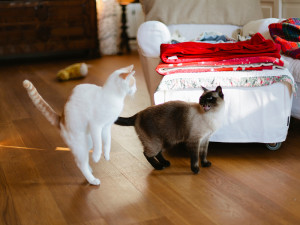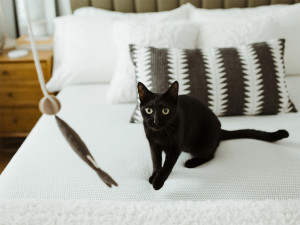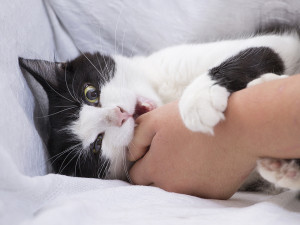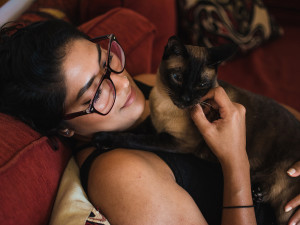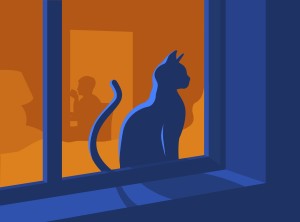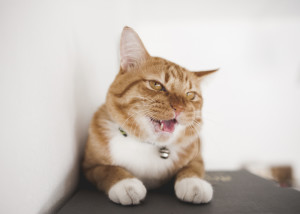Are Your Cats Playing or Is This a Full-On Scar Vs. Simba Fight?
A recent study breaks down the difference.
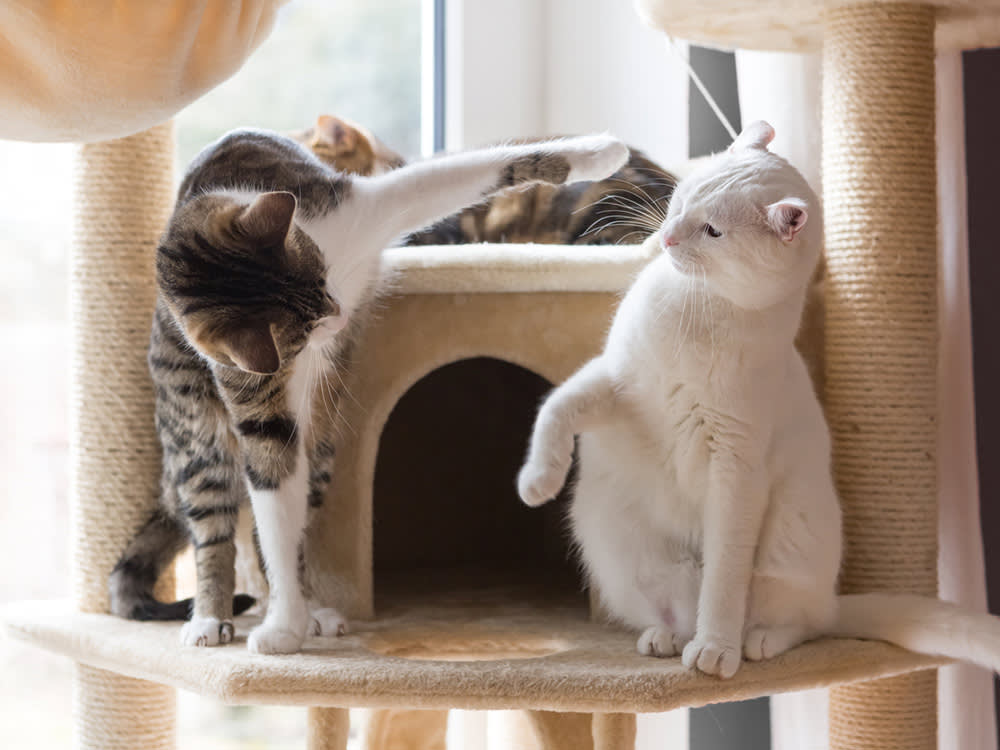
share article
Have you ever heard a big thump in your living room, run in, and wondered if your two cats are being playful or if they’re going for the full Lion King fight scene? It...can be hard to tell; a lot of what cats do when they play involves behavior that is borrowed from fighting and from predatory behavior. When cats play with toysopens in a new tab, most of what they are doing is essentially predatory in nature — but what about when cats play with other cats? It’s easy to spot the serious fights and the gentle bouts of play, but so much of the way cats interact with each other is in that oh-so-vague middle zone.
A January scientific studyopens in a new tab explores how to tell if cats are playing or fighting. Researchers studied the interaction between pairs of cats in 105 videos (210 cats) found on YouTube or taken by pet parents. The results offer practical guidelines for determining if cats are playing, fighting, or having an interaction that’s somewhere in between. The research identifies simple cat behaviors anyone can observe to decide with more confidence whether their cats are playing or not.
In the study, all 105 videos were labeled by four experts — two in academia and two applied animal behaviorists — as either playful, intermediate, or agonistic. (Agonistic is the zoological term for behavior that’s associated with conflict.) Of the 105 videos, seven were removed because the experts didn’t agree about how to categorize those interactions. Each interaction was also analyzed in fine detail based on the specific behavior of each cat.
Then, through a complex statistical analysis, the videos were divided into groups based on what types of behaviors tended to be seen together. The three resulting groups of videos matched up well with the three categories used by the experts to identify the interactions: playful, intermediate, or agonistic. The playful and intermediate interactions had more in common than the intermediate and agonistic interactions.
Because cat play and cat fighting are not behaviors that are completely distinct (as are, for example, eating versus running or sleepingopens in a new tab versus grooming), and because play is an inherently flexible category of behavior, it’s not possible to set up rules that perfectly sort every interaction into playful or not playful. The fundamental truth about play is this: It’s only play if everyone involved is a willing participant. But that doesn’t make it much easier to tell what’s play and what’s not. This study does offer some guidelines that do exactly that. So, the next time you are watching a couple of cats acting in a way that seems playful, consider the conclusions from the study and how they apply to your cats.
Listen for Chatter
When the interactions between the cats in the study involved conflict, the cats often had bouts of inactivity, and there were lots of vocalizationsopens in a new tab. They did not have much physical contact, so lots of chasing combined with vocalization is not a good sign. When one cat is always chasing another or always on top in any wrestling bout, the interaction is not reciprocal and is likely agonistic in nature.
Do the Cats Change Positions?
Cats in the study who wrestled without vocalizing were generally being playful, especially when the wrestling lasted a long time. Researchers found that cats are likely playing if they change positions regularly (the same cat was on both the bottom and on the top repeatedly during the interaction). If cats are often in close contact, especially while sleeping, and they regularly share food and toys, the occasional tension in play is not too worrisome. Kittens in the study were especially likely to be playful.
Are the Cats Taking Breaks?
Researchers found that intermediate interactions often had more in common with play than with fighting and tended to involve lots of breaks during which cats reassess the interaction. During what was classified as “intermediate interactions,” cats’ backs were arched, their hair was upopens in a new tab, they were hissingopens in a new tab, and one cat declined to interact at all. Some intermediate interactions switched between clear play by both cats and situations in which one cat appeared to want to keep playing but the other one didn’t.
Truly intense fights are obvious, but conflict that could lead to trouble is more subtle. Being able to tell if cats are playing or if there is a lot of tension hidden in their interactions can help us keep them happy. Knowledge of what’s play, what’s conflict, and what’s in between makes it easier to know when to interrupt and separate them or when to seek help from a cat behavior expert for the sake of everyone’s quality of life.
Now, let the games begin!

Karen B. London, PhD, CAAB, CPDT-KA
Karen B. London, Ph.D., is a Certified Applied Animal Behaviorist and Certified Professional Dog Trainer who specializes in working with dogs with serious behavioral issues, including aggression, and has also trained other animals including cats, birds, snakes, and insects. She writes the animal column for the Arizona Daily Sun and is an Adjunct Professor in the Department of Biological Sciences at Northern Arizona University. She is the author of six books about training and behavior, including her most recent, Treat Everyone Like a Dog: How a Dog Trainer’s World View Can Improve Your Lifeopens in a new tab.
Related articles
![a tattooed person with curly red hair on a couch pets a brown and black cat]() opens in a new tab
opens in a new tabYour Cat Can Tell When You’re Stressed, Study Says
It’s all in their noses.
![Brown Gray Cat Lounging on Red Arm Chair Near Green Plant]() opens in a new tab
opens in a new tabCat Jumping Off the Literal Walls? They Could Have Hyperthyroidism
Everything you need to know about the common disease.
![]() opens in a new tab
opens in a new tabYour Cat Hates It When You Frown
According to a new study, cats know what their parents’ facial expressions mean. Just, uh, FYI.
![a person with glasses cuddles with a brown cat]() opens in a new tab
opens in a new tabA Cat Could Be Your New On-Campus Counselor
A new study finds that the presence of cats on college campuses helps calm students who could really use some chill time.
![]() opens in a new tab
opens in a new tabThis Study Says You Literally Can’t Hide From Your Cat
Happy spooky season.
![a cat making a strange face with its mouth open.]() opens in a new tab
opens in a new tabIs Your Cat Judging You?
That disapproving sneer is actually the “Flehmen response.” A cat behaviorist explains how to read cats’ lips.
